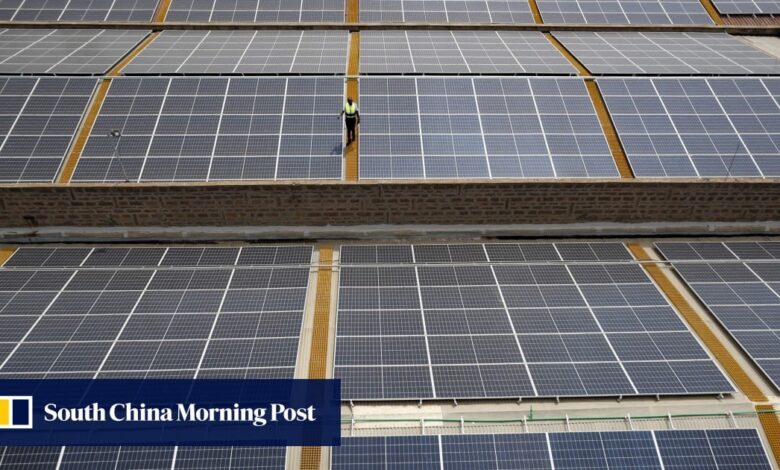China urged to be more tech savvy with Belt and Road Initiative as developed nations steer clear and US curbs hit hard

[ad_1]
Beijing needs to beef up technological collaborations to underpin and enhance the Belt and Road Initiative, analysts say as the ambitious plan advocated by President Xi Jinping marks its 10th anniversary this year amid growing geopolitical uncertainties.
The expert assessments, made at a seminar hosted by the Ministry of Science and Technology at the weekend, came as Beijing’s initiative to link economies into a China-centred trading network still reports an overall low level of technological development and insufficient collaboration with its partners.
Technological cooperation is concentrated among just a few countries, with a focus on technology transfers or application stages, while joint efforts in research and development are lacking, said Hu Zhijian, a senior researcher at the Chinese Academy of Science and Technology Development Strategy.
There is a lack of cooperation in hi-tech industries, Hu warned, particularly in the areas of digital and green technologies. And he said the focus is on industries that have lower value-added and technological levels.
China’s Belt and Road Initiative regains momentum
China’s Belt and Road Initiative regains momentum
More importantly, cooperation driven by the market is insufficient, and there is a lack of participation from countries with advanced scientific capabilities, he added.
The belt and road was launched in 2013 as a way of enhancing China’s trade links with dozens of countries in Asia, East Europe, Africa and Latin America, and it is one of Xi’s most iconic policies.
Beijing is due to convene the Third Belt and Road Summit next month, and more trade and investment collaborations could be announced.
The world’s second-largest economy has long sought to expand its global tech cooperation, and this was reiterated in a letter from Xi that a local official read at the Pujiang Innovation Forum in Shanghai on Sunday.
China is also striving to be more self-reliant amid attempts by Washington to restrict access to advanced tech products.
As of June, China had signed more than 200 agreements bringing 152 countries and 32 international organisations under the belt-and-road umbrella, including the 10 members of the Association of Southeast Asian Nations.
However, the standard for measuring the belt and road’s benefits is not only at the technological level, but more significantly in the applicability of its output, said Wang Yiwei, a professor of international relations at Renmin University.
“It is unrealistic to expect a significant improvement in China’s technological level through cooperation with belt-and-road countries,” Wang said. “It is not necessarily better for technology to have higher technological content; the purpose of technology is to promote construction and development.
“From this perspective, the Belt and Road Initiative has created benefits that go far beyond technology itself.”
China, South Asia trade ties shine in key expo, but Indian presence remains low
China, South Asia trade ties shine in key expo, but Indian presence remains low
Collaborative research has been carried out through more than 50 jointly established laboratories in the past six years, according to Hu, the senior researcher. And there have been about 1,000 joint research projects, with a cumulative investment of around 3 billion yuan (US$411.6 million).
Mlungisi Cele, acting head of South Africa’s National Advisory Council on Innovation, said at the weekend seminar in Shanghai that China’s infrastructure investment in Africa improves regional competitiveness by addressing supply bottlenecks, while China also benefits from Africa’s resources for its own economic expansion.
These projects involve Chinese technology and a combination of local and Chinese manpower, providing some knowledge transfers. However, unemployment in many African countries remains a challenge, he said.
[ad_2]
Source link






